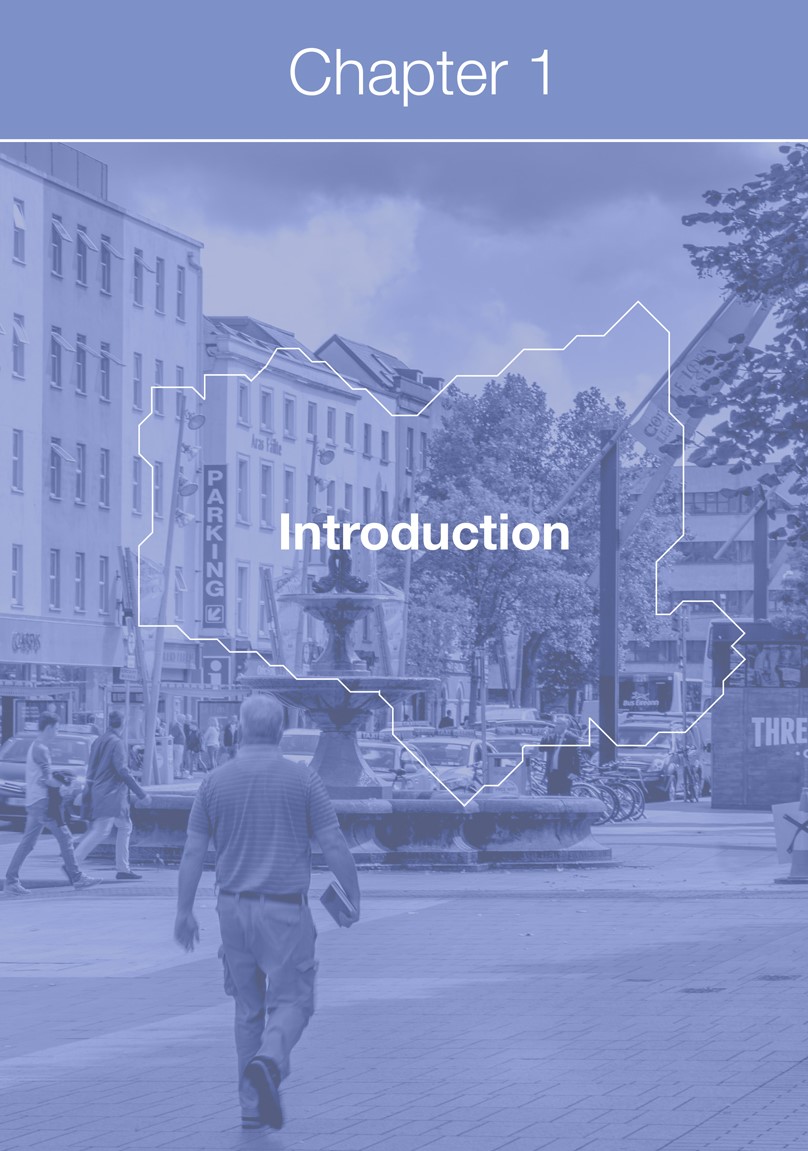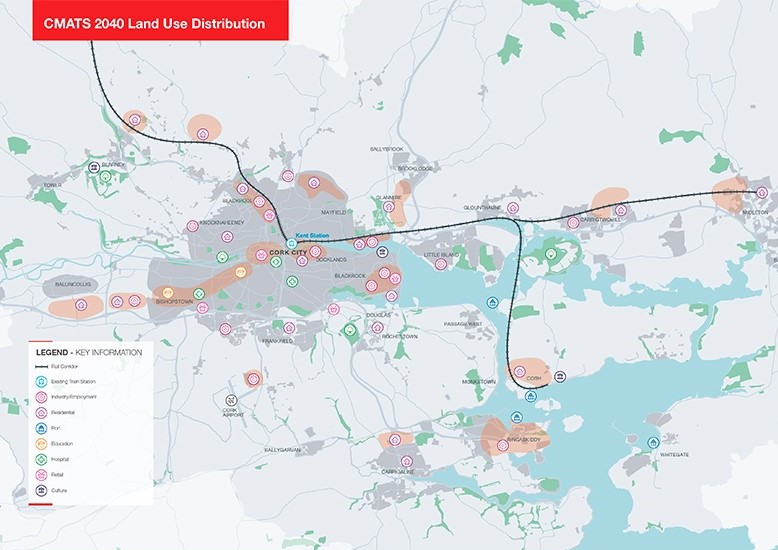1. Introduction
Introduction
1.1
With a population of over 210,000 and ambitious growth targets over the next 20 years, Cork City is an emerging international centre of scale and a national driver of economic and population growth. This Draft City Development Plan sets out how Cork City will grow and develop over the next six years and continue to be an innovative, vibrant and healthy city.
1.2
Cork is a diverse city. It is a twin-university and maritime City with a vibrant city centre, thriving neighbourhoods and urban towns, a rich hinterland and a rich range of natural and built heritage. Cork City has significant potential for sustainable growth and has the necessary human, economic and environmental assets to realise its full potential.
1.3
For the first time, a single statutory development plan will encompass Cork City and all its suburbs, including the towns of Ballincollig, Blarney, Tower and Glanmire, and the immediate hinterland areas.
1.4
The new City Development Plan will represent an important step in the evolution of the strategic planning of Cork City. This Plan will influence how we engage with each other as communities; how we work, learn, travel, rest, play and experience all that the city has to offer. It will guide how we use our land and water and where new homes, businesses, schools, community facilities, health services and open spaces will be located. While setting a framework to achieve the ambitions for Cork City, the core principles embodied in this plan are sustainable development, health, compact growth, the creation of liveable communities and places, and the complimenting of nature and climate resilience.


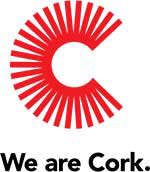
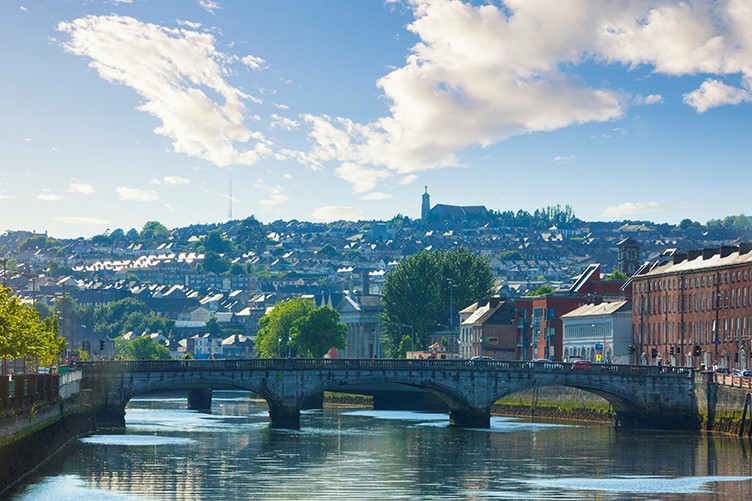
Strategic Vision
1.5
The Strategic Vision is for Cork City to take its place as a world class city, driving local and regional growth, embracing diversity and inclusiveness and growing as a resilient, healthy, age-friendly and sustainable compact city with placemaking, communities and quality of life at its heart. This strategic vision is based on the following key strategic principles:
Compact GrowthIntegrate land-use and transport planning to achieve a compact city with 50% of all new homes delivered within the existing built-up footprint of the City on regenerated brownfield, infill and greenfield sites identified in the Core Strategy, and to achieve higher population densities aligned with strategic infrastructure delivery. |
A city of neighbourhoods and communitiesDevelop a sustainable, liveable city of neighbourhoods and communities based on the 15-minute city concept, ensuring that placemaking is at the heart of all development. |
Sustainable and active travelTo implement the Cork Metropolitan Area Transport Study (CMATS) and develop a transformed sustainable transport system with a significant shift toward walking, cycling and public transport and to enshrine this principle in all developments across the City. |
Enhanced built and natural heritageProtect, enhance, support and develop our built and natural heritage, our open spaces and parks, and our green and blue infrastructure, and expand our built heritage with new buildings, townscapes and public spaces achieved through the highest standards of architecture and urban design. |
A strong and diverse economySupport Cork City’s role as the economic driver for the region and the creation of a strong, resilient, diverse and innovative economy. |
A resilient CityContribute to a framework for the transition to a low-carbon and climate-resilient City, resilient to extreme weather events, pandemics, economic cycles and other potential shocks. |
A healthy, inclusive and diverse cityBuild on Cork City’s status as a World Health Organisation designated Healthy City, offering an inclusive and vibrant environment for all whilst promoting healthy living and wellbeing. |
A connected CityCork City will continue to be a highly connected city providing local, regional, national and international connectivity. |
A city of learning and cultureTo build on Cork’s designation as a UNESCO Learning City and the city’s rich cultural heritage and to foster learning, culture, heritage and the arts throughout the City. |
1.6
Cork has a strong foundation on which to build this strategic vision. Cork is already a well-performing medium-sized European urbancentre and a major driver of growth in Ireland. Expanding further upon this potential is crucial to enable Cork City to grow in line with national,regional and local ambitions. This strategic vision and strategic objectives will allow Cork City to flourish and develop as an internationally competitive, sustainable urban environment – a city that values its people and provides an enhanced city for people to live, work, play and visit.
A New City
Development Plan
1.7
The National Planning Framework sets significant growth targets for Cork City. By 2040, it is planned that Cork will be a city of international scale offering residents of the region a broader range of services and opportunities and supporting continued public and private sector investment.
1.8
This City Development Plan is the key land use and strategic planning strategy to guide the development of Cork City to achieve this strategic vision. The City Development Plan 2022 – 2028 will be the first development plan of a three-plan cycle up to 2040, the horizon year of the National Planning Framework. This Plan therefore represents the first step in achieving the ambitions of the National Planning Framework.
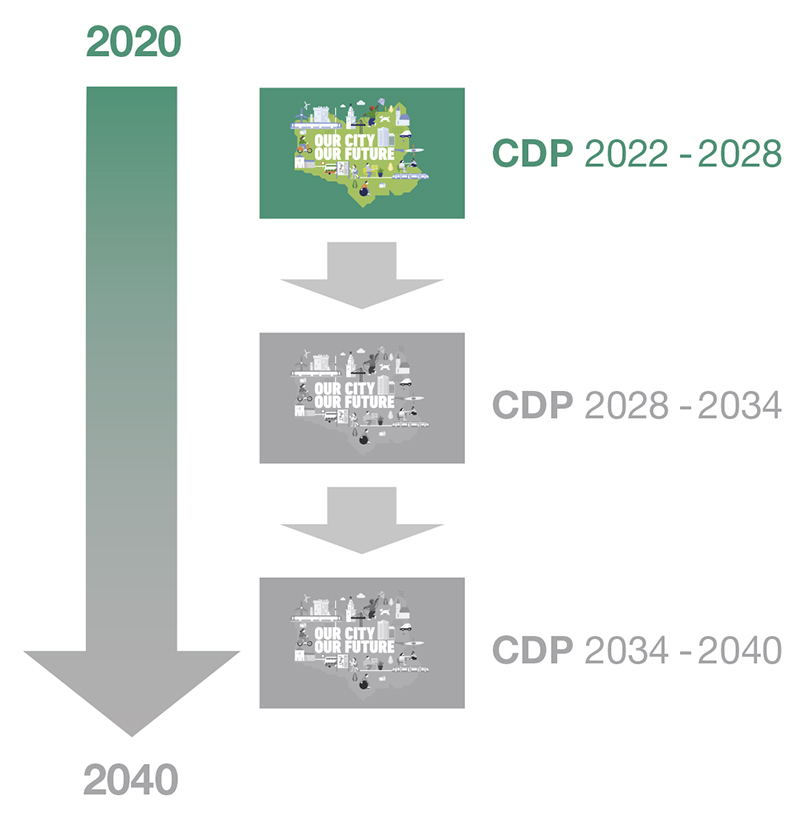
1.9
Development Plans have a wide stakeholder audience including local communities, developers, health services, business, education providers, landowners, government departments, infrastructure and utilities companies and environmental groups. Collaboration with all of these stakeholders is necessary for this Plan to succeed.
1.10
This plan sets a foundation to achieve long term goals for Cork City that are beyond the timeframe of the plan. For example, the development of a city of neighbourhoods, regeneration of key areas of the City such as the Docklands, delivering the long-term transport plan, and establishing the city as one of the most attractive places in Europe to live and work in. These objectives will be embedded in this plan as a means to ensure that there is a strong foundation to achieve these objectives in the long-term and within the context of future development plans.
An Informed Plan
1.11
This Plan brings together a wide range of sustainable planning principles based on established good practice and new thinking. In addition to the broad consultation with residents and interest groups in Cork City, the plan has been informed by a suite of studies, international comparators and socioeconomic forecasts and assessments.
These include:
• A Joint Housing Strategy that considered the future demand for a mix of housing types and tenure across Cork City and County;
• A Green and Blue Infrastructure Study, capturing in a unified study an evidence based approach for the use, protection and enhancement of the City’s natural and semi-natural spaces and corridors including parks, woodlands, fields, hedges, lakes, ponds, playing fields, aquatic habitats and watercourses.
• An Active Recreation Needs Assessment that forecasts the need for amenities for active and passive physical activity.
• A Citywide Capacity Study, a residential land audit that assessed, in a bottom-up approach, the capacity of lands within the City to accommodate residential development.
• A City Neighbourhood Profile, that provides key information on 44 distinct neighbourhoods in Cork City.
• Greater clarity on urban densities and building height provided through an Urban Density, Building Height and Tall Building Strategy.
1.12
These strategies and studies together provide a robust evidence base for the strategic vision and development objectives set out in this Plan. In parallel, a range of other studies and reports are being prepared that have informed the City Development Plan. These include Cork City Council’s Climate Change Adaptation Strategy, Cork City Centre Economic and Revitalisation Study, and the City’s Heritage and Biodiversity Plan. Accompanying this Plan are a Strategic Environmental Assessment, Appropriate Assessment and Strategic Flood Risk Assessment.
Local Planning
1.13
Apart from the Cork County Council Municipal District Local Area Plans 2017 that relate to the Cork City Council Area and will eventually be replaced by this City Development Plan, only one Local Area Plan is currently active, the North Blackpool Local Area Plan 2011 which has been extended until September 2021.
1.14
Where appropriate, the City Development Plan objectives may be developed in more detail at a local level. This may be through local area plans, framework plans or development briefs. These will be prepared as the need arises and resources allow.
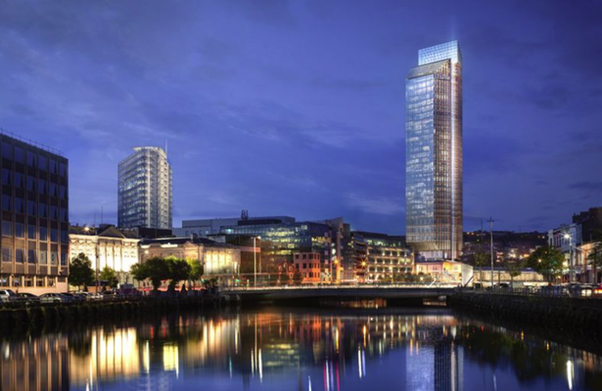
Plan-making Process
1.15
The process to prepare this plan officially commenced in June 2020 with the publication of the Pre-Draft consultation document ‘Cork City Development Plan 2022-2028: Our City, Our Future’ and a period of consultation and engagement with a wide range of stakeholders including the public and the Elected Members of Cork City Council. A Chief Executive’s report was prepared following the public consultation and engagement which sets out the strategic direction the Plan should take. The submissions made at the Pre-Draft Plan consultation stage helped inform this Draft Plan. The supporting ‘Process Overview’ document available on Cork City Council’s website provides further detail on the plan-making process.
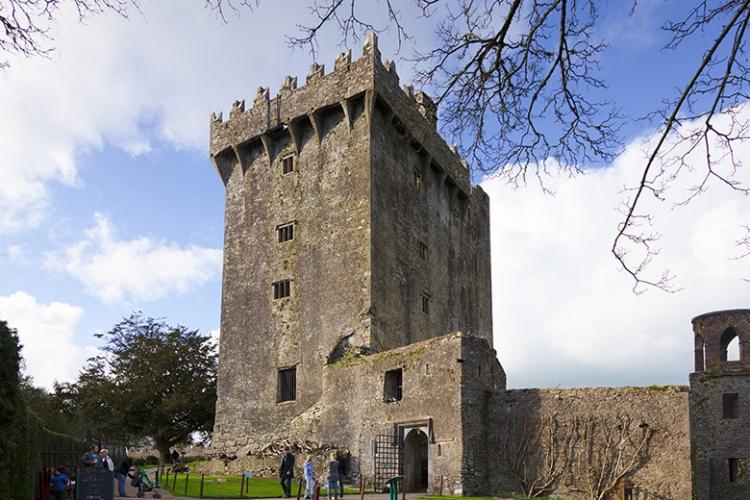
Legislative Basis
for this Plan
1.16
Development Plans must comply with the requirements set out in the Planning and Development Act, 2000 as amended and associated Regulations. Sections 9 to 12 of the Act relate to the making of a development plan. One of the core legal requirements of a development plan is to set out an overall strategy for the proper planning and sustainable development of the area.
1.17
In addition, a development plan must comply with various European Directives including Directives relating to Strategic Environmental Assessment, Habitats and Flooding. The Plan must also comply with Ministerial Guidelines issued under section 28 of the Planning and Development Act and any Specific Planning Policy Requirements (‘SPPRs’) included within. Appendix 1 contains the statement relating to this Plan to demonstrate compliance with this requirement.
Strategic Context
1.18
This new Draft City Development Plan represents an important step in the strategic planning of the City against the backdrop of a new national and regional planning context. The direction of the future development of Cork City is guided by the National Planning Framework, Regional Spatial and Economic Strategy, Cork Metropolitan Area Strategic Plan and the Cork Metropolitan Area Transport Strategy. These set clear objectives for the population of Cork City to grow by 50% to 335,000 by 2040. This ambition must be achieved in a sustainable way with the objective of improving quality of life for all residents, workers and visitors to Cork City. These are discussed further within the Core Strategy.
1.19
There are 17 Sustainable Development Goals (SDGs) set by the UN General Assembly in 2015 as a blueprint to achieve better and more sustainable development for all. Development Plan policies and objectives can support the achievement of SDGs. Ireland has committed to achieving the SDGs as set out in the ‘The Sustainable Development Goals National Implementation Plan 2018-2020’ published by the Department of Communications, Climate Action and Environment.
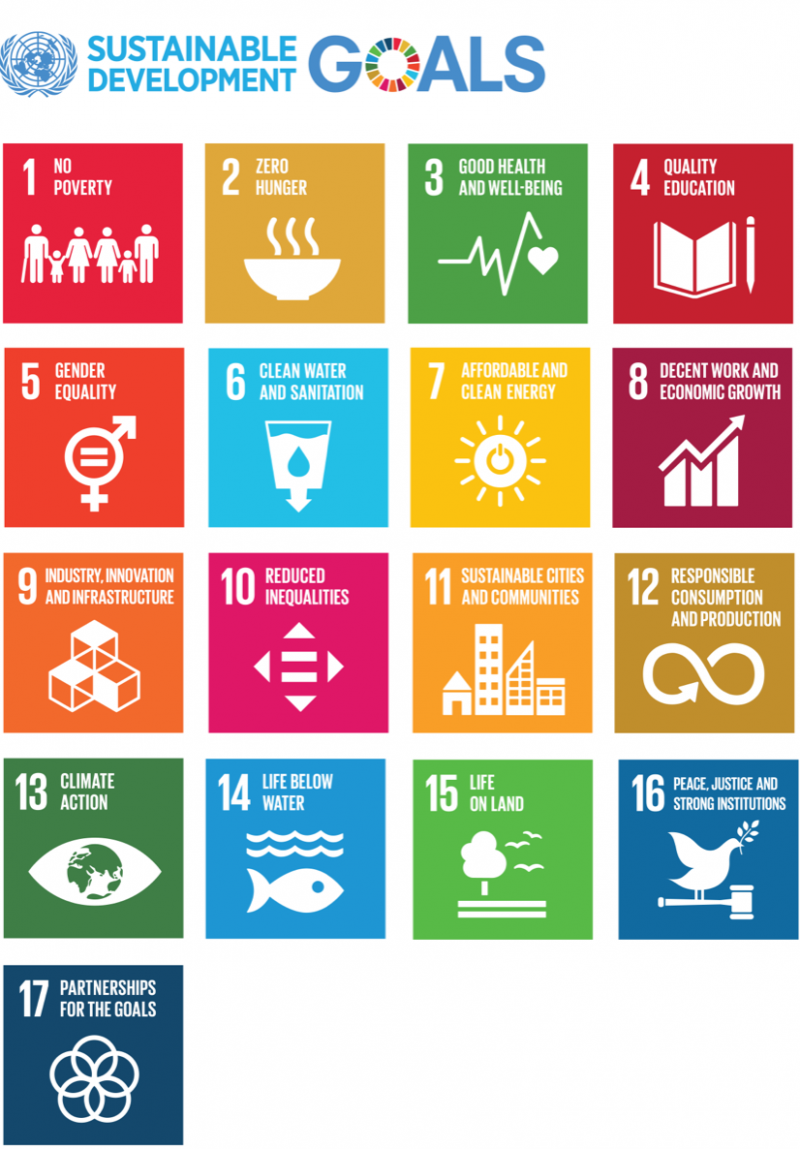
Source: United Nations (UN).

1.20
Project Ireland 2040 is the Government’s long-term overarching strategy to ‘make Ireland a better country for all of its people’. This comprises the National Development Plan 2018-2027 and the National Planning Framework (NPF) – a high-level strategy to guide development and investment in Ireland up to 2040. Project Ireland 2040 sets ambitious growth targets for Cork City based on a vision of a regional strategy to provide a counterbalance to Dublin. The NPF sets out ten National Strategic Outcomes, which form the basis for this Plan.
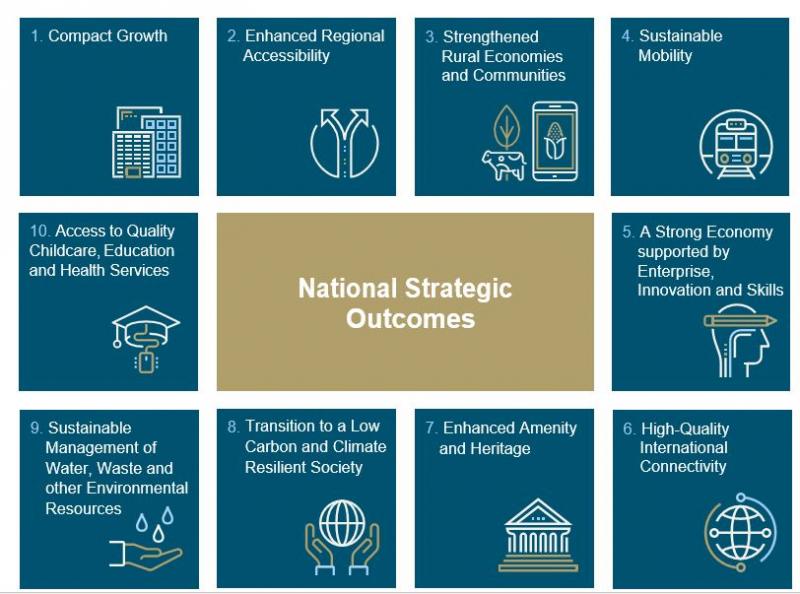
Source: National Planning Framework (NPF)

1.21
The RSES is a strategic regional development framework supporting Project Ireland 2040 and the NPF. It sets a settlement and economic hierarchy for the region and reinforces the National Strategic Outcomes with Regional Planning Objectives. Development plans are legally required to be consistent with the Regional Spatial and Economic Strategy.
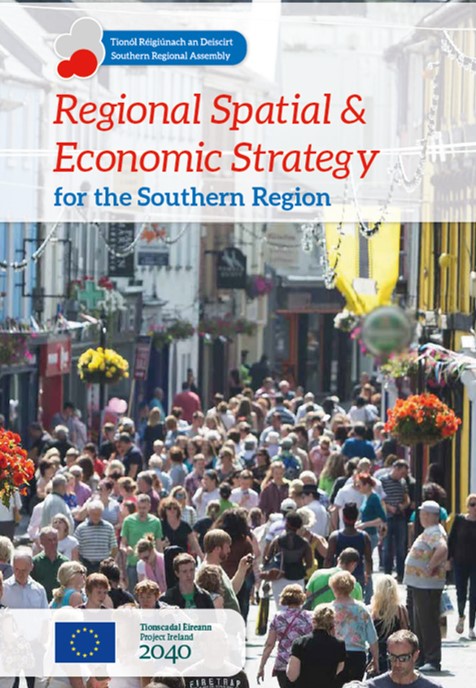
Source: Southern Regional Spatial & Economic Strategy (RSES).
1.22
The Cork MASP is included within the RSES and it sets out policy objectives for the Cork Metropolitan Area. The MASP builds upon the ambitious growth targets for Cork set out in the NPF and seeks to strengthen the Cork Metropolitan area as an international location of scale, and a primary driver of economic and population growth in the region.
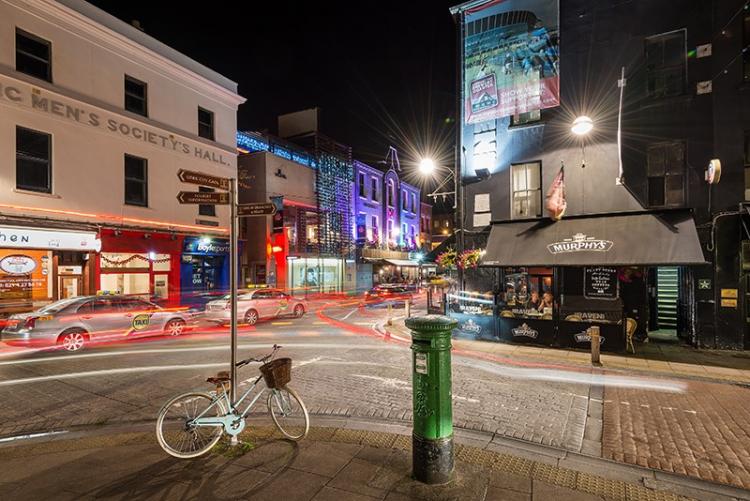
Source: Cork Metropolitan Area Transport Strategy (CMATS), National Transport Authority. (Click on MAP for more Detailed Version)
1.23
CMATS was produced by the National Transport Authority (NTA) in collaboration with Transport Infrastructure Ireland (TII), Cork City Council and Cork County Council. This represents a coordinated land-use and transport strategy for the Cork Metropolitan Area up to 2040. It envisages an investment of €3.5 billion to improve mobility in the Cork Metropolitan Area, including Cork City, with significant investment in public transport, walking and cycling.
Source: Cork Metropolitan Area Transport Strategy (CMATS), National Transport Authority. (Click on MAP to download more Detailed Version)
1.24
This Plan sets out 9 Strategic Objectives to guide development in the City. These Strategic Objectives generally reflect the various Chapters set out in this Plan and are addressed in Chapter 2. However, the following tables set out how these 9 Strategic Objectives align with the United Nations Sustainable Development Goals and the National Strategic Outcomes of the National Planning
Framework.
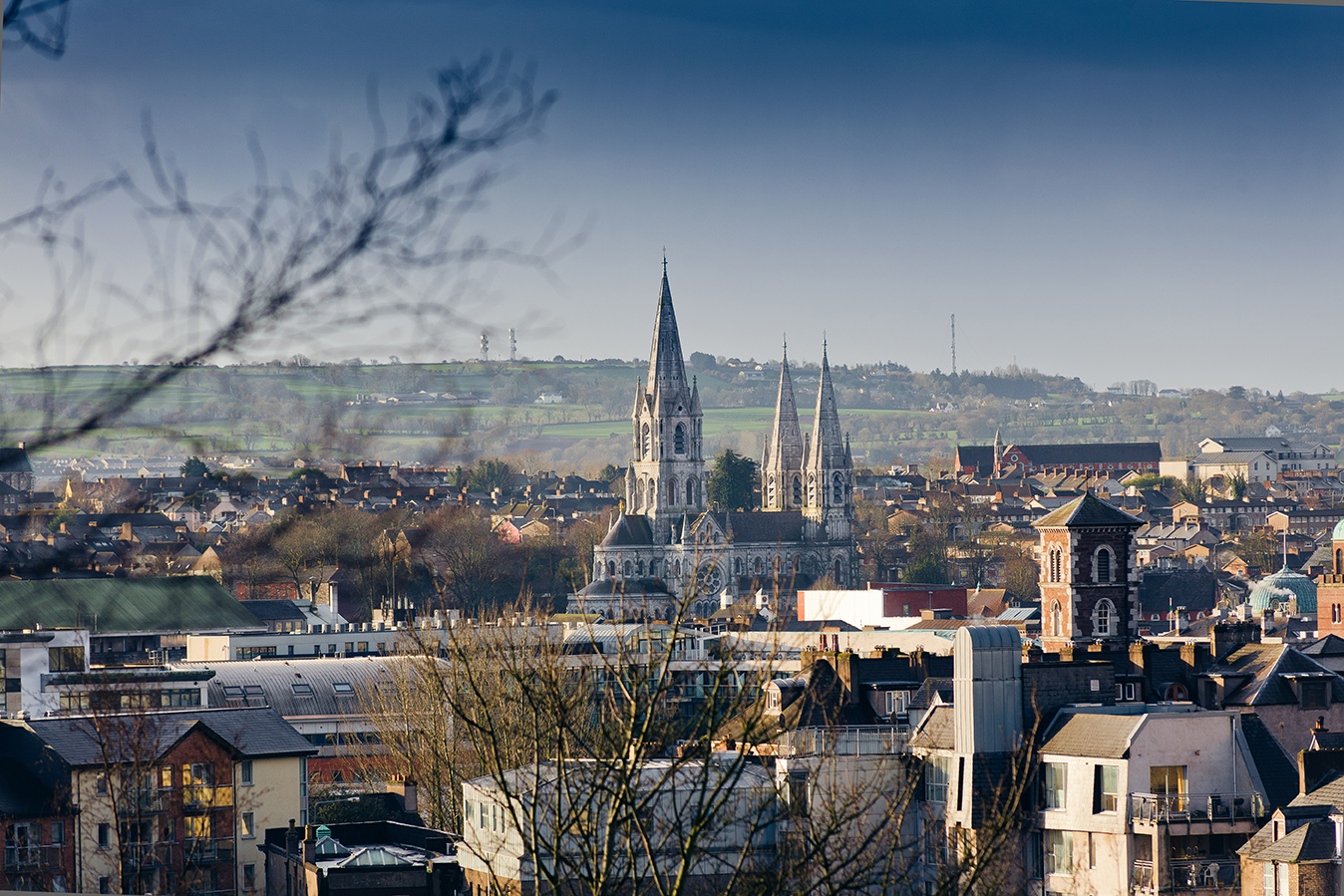
Structure of this Plan
1.25
This Plan comprises a written statement, a series of zoning maps, a built heritage volume, appendices and strategic environmental reports, as well as a series of supporting documents. The Plan is presented in three volumes:
Volume 1: Written Statement
Volume 2: Mapped Objectives
Volume 3: Built Heritage Objectives
1.26
The Written Statement comprises the main policy document of the Plan. While intended to be read by a broad audience this Plan is a legal document and often wording in the Plan reflects the statutory obligations of the Plan. In the event of any conflict or ambiguity between the written statement and the supporting maps or appendices, the written statement (Core Strategy and Strategic Objectives) will take precedence.
1.27
The structure of the plan is outlined below. Each section is guided by the principles set out at the introduction to this chapter:
• compact growth,
• a city of neighbourhoods and communities,
• sustainable and active travel,
• enhanced built and natural heritage,
• a diverse and resilient economy,
• a resilient city,
• a healthy, diverse and inclusive city,
• a connected city, and
• a city of learning and culture.
1.28
Chapters 1 and 2 introduce the Plan and set out the Goals and Core Strategy for the city. The following chapters 3-9 set out development objectives and actions under a range of headings. Chapter 10 identifies Key Growth Areas and Neighbourhood Development Sites throughout the City that, if developed, will have local benefits and could act as catalysts for transforming their surrounding neighbourhoods. Some of these sites may also benefit from active land management interventions. Chapter 11 sets out placemaking and development management objectives. Chapter 12 sets out landuse zoning objectives (which are illustrated in a series of zoning maps within Volume 2).
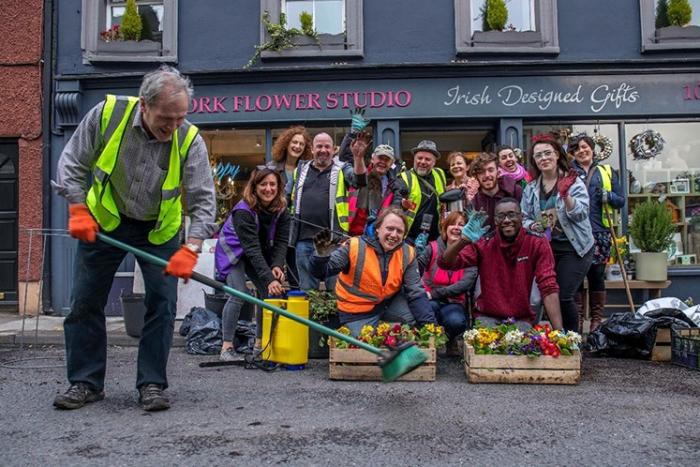
1.29
These are presented in a series of maps that set out land use zonings and other objectives.
1.30
This includes the Record of Protected Structures, the Record of Monuments and Places and Architectural Conservation Areas.
How to Participate and Influence the Next City Development Plan
1.31
There is an opportunity to participate in the plan-making process for this Plan by participating in the formal public consultations. This Draft City Development Plan will be available in public offices and online at www.corkcitydevelopmentplan.ie
Continued engagement with the public and other stakeholders is planned as part of this process. Everyone is welcome to and encouraged to make submissions during this consultation.
1.32
At the end of the public consultation period, a Chief Executive’s report on the issues arising in the submissions received and the public and stakeholder engagement will be prepared and submitted to the Elected Members of Cork City Council. Following consideration of the report if the Council decides to amend the Draft Plan, a further period public consultation on these amendments will take place. You will have another opportunity at this stage to participate and make submissions on the proposed amended Plan.
Freedom of the City Art Competition
